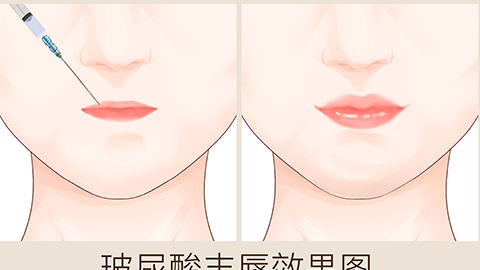Is hyaluronic acid lip augmentation safe?
Generally, hyaluronic acid lip augmentation carries certain risks. These risks typically include infection, vascular embolism, allergic reactions, overfilling, and skin irregularities. A detailed analysis is as follows:

1. Risk of infection: During hyaluronic acid lip augmentation, if aseptic techniques are not strictly followed or postoperative care is improper, bacteria may enter the injection site and cause localized infection. Symptoms of infection may include redness, swelling, pain, and fever. In severe cases, purulent discharge or other signs of suppurative infection may occur.
2. Vascular embolism: Improper injection technique may result in hyaluronic acid embolizing local blood vessels, leading to tissue ischemia and necrosis. Signs of vascular embolism may include changes in lip color, numbness, reduced or lost sensation, and tingling. Emergency treatment is required to prevent permanent damage.
3. Allergic reaction: Individuals may experience an allergic reaction to hyaluronic acid or other injected substances. Allergic reactions may manifest as localized swelling, itching, urticaria, and, in severe cases, systemic reactions such as difficulty breathing, requiring immediate medical attention and anti-allergic treatment.
4. Overfilling: If the physician misjudges or performs the procedure improperly, excessive hyaluronic acid may be injected into the lip tissue, resulting in lip volume greater than intended. Overfilling not only affects aesthetics but may also cause long-term lip muscle dysfunction, impacting speech and eating.
5. Skin irregularities: After partial absorption of hyaluronic acid by the body, the remaining filler may distribute unevenly, resulting in small bumps or depressions. While this condition often improves on its own, if it persists or affects appearance, further treatment may be required.
To reduce these risks, it is recommended to choose a reputable medical facility, an experienced physician, and qualified filler materials before undergoing hyaluronic acid lip augmentation. Additionally, postoperative care should follow the physician's instructions, including keeping the treated area clean and dry, and avoiding strenuous activities.









